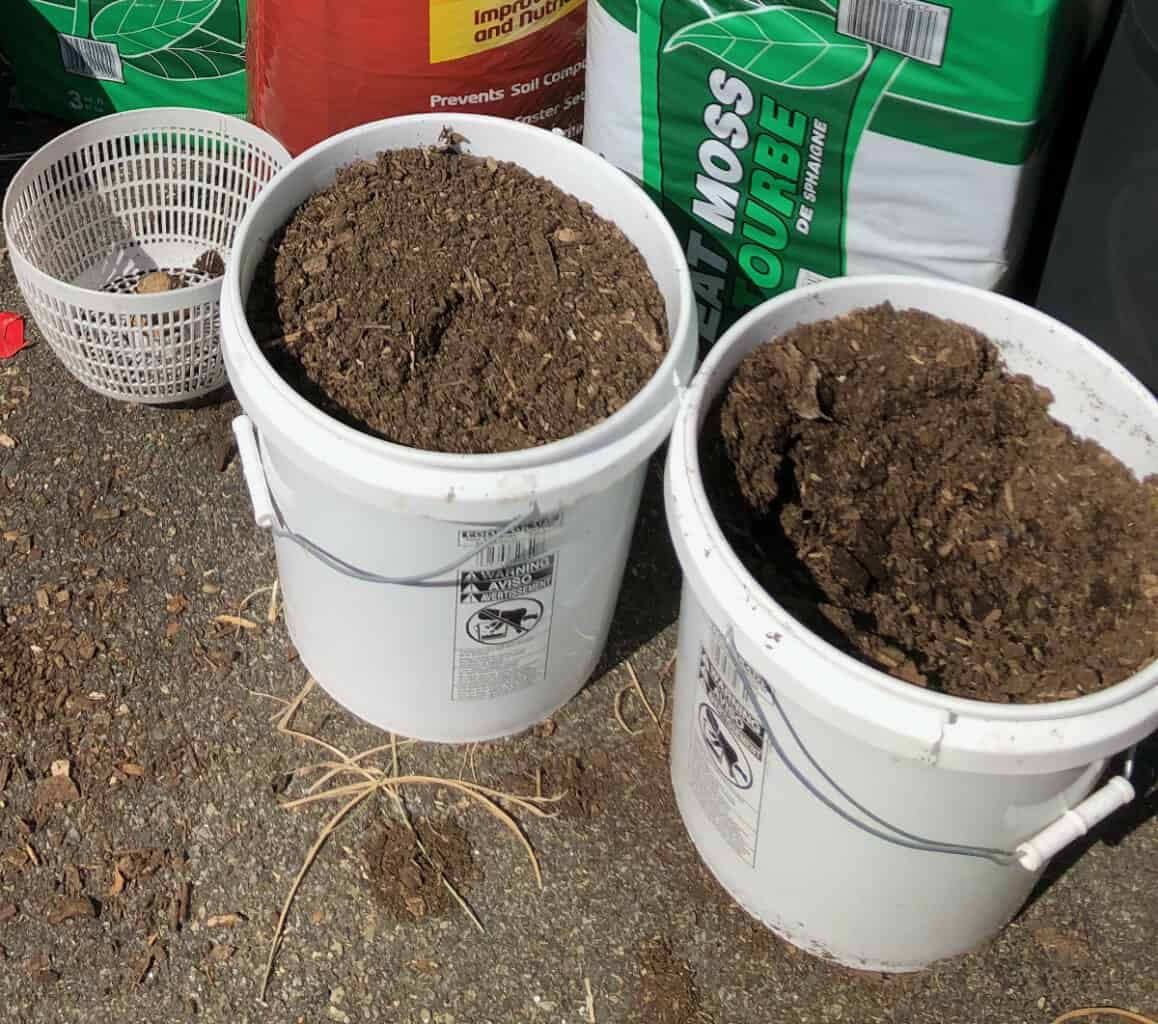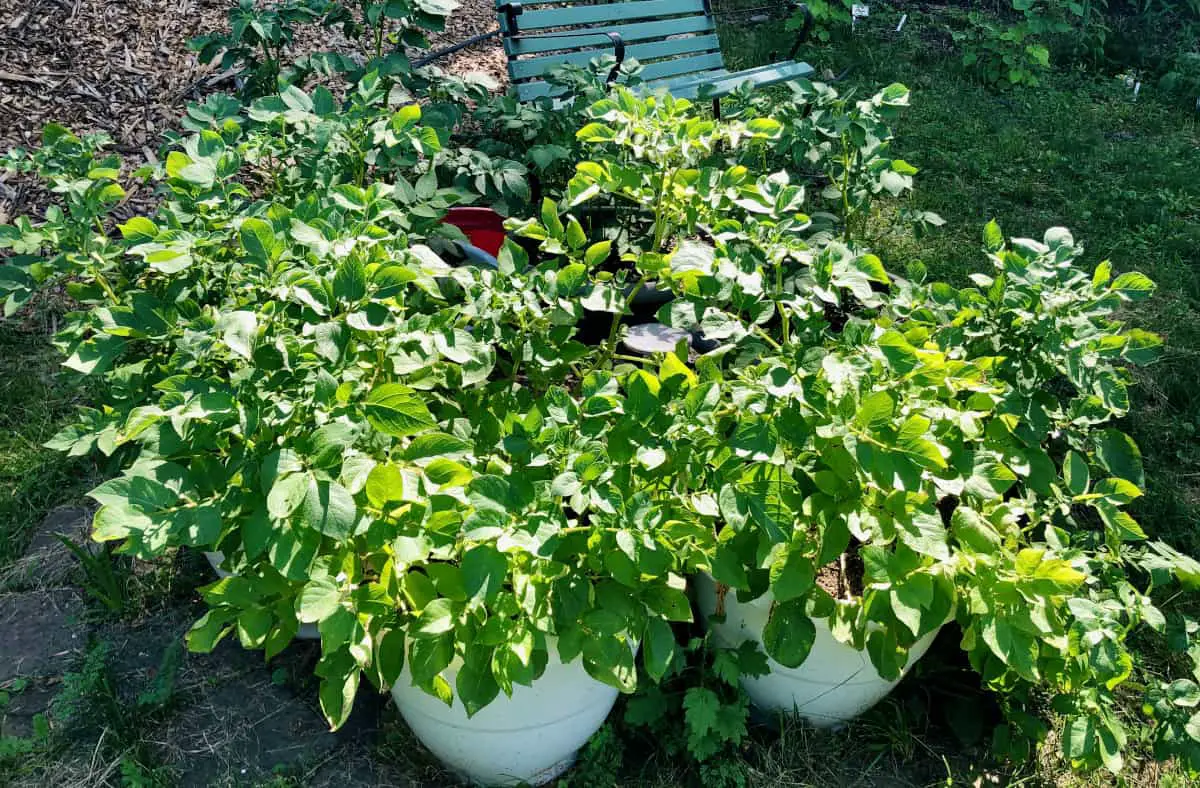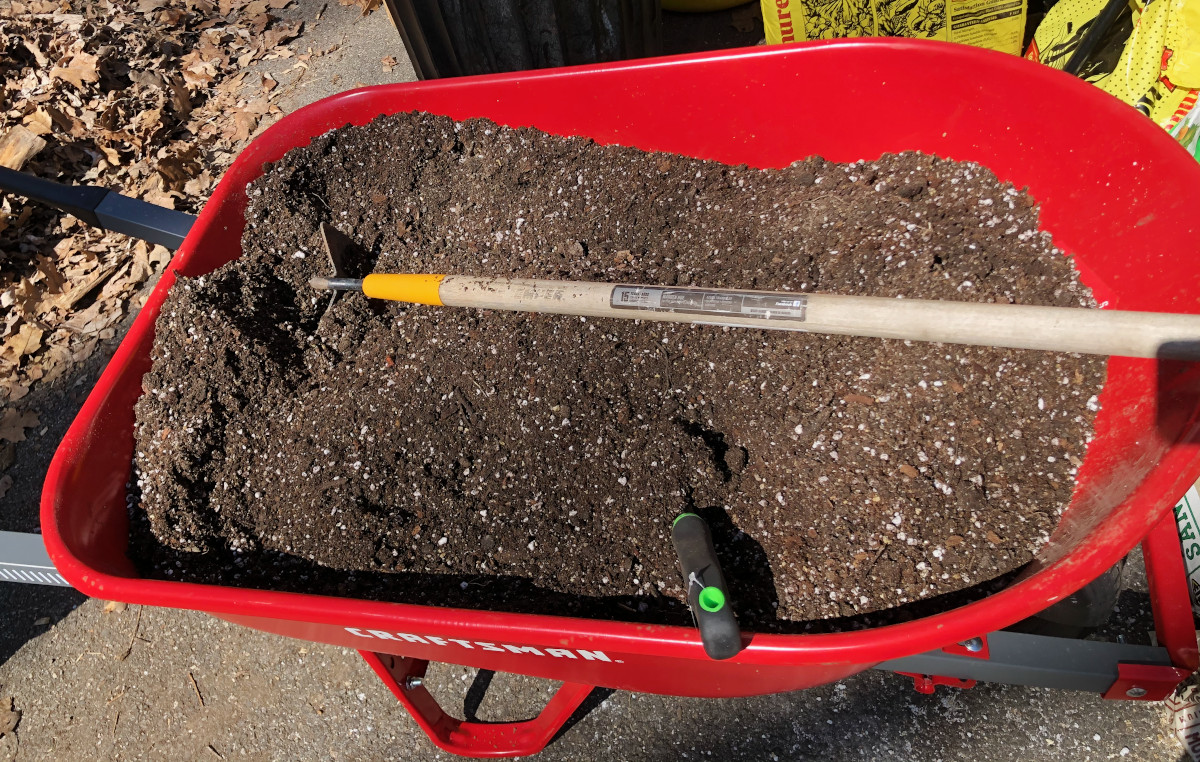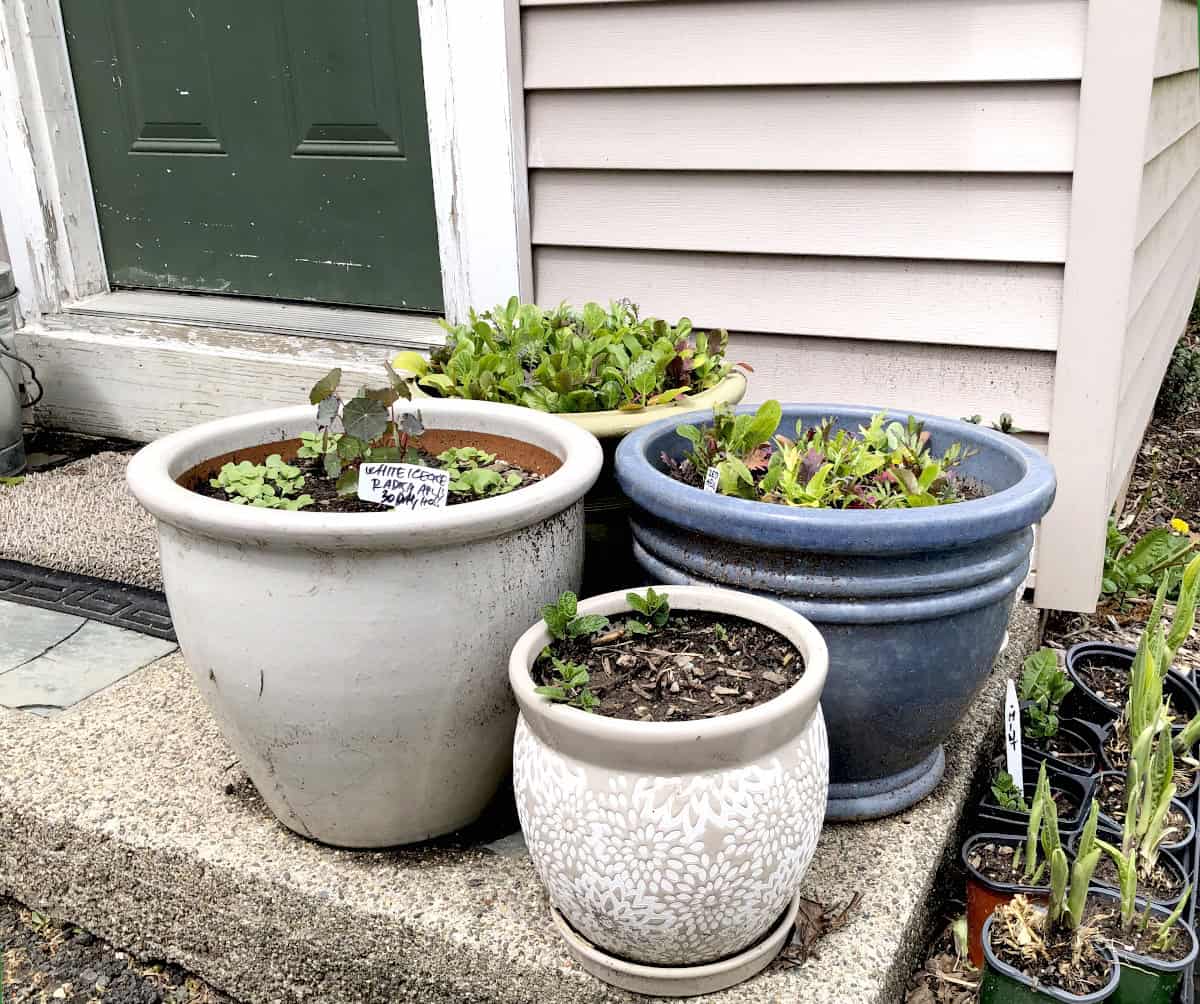The benefits of growing in 5-gallon buckets are that they can be moved around when harsh weather, to keep the plants in the sun, or can be moved out of the sun when too hot. Using 5-gallon buckets an instant garden can be created in limited spaces such as a balcony, or a patio.
- Grow only in food-grade buckets. If the buckets are obtained secondhand ensure there were no chemicals or toxic material inside the buckets previously.
- To avoid using too much potting soil, fill the bottom of the buckets with twigs, add leaves and kitchen scraps along with a paper towel or cardboard, or shredded newspapers, then add grass clippings. All these will fill the bucket halfway full and over time will decompose and turn into compost to feed the soil life and improve the soil structure. Then fill the rest of the bucket with the soil where the seeds will be sowed or plants planted.
- Get a plant dolly or a caddy which will make it easier for you to move the buckets around. Once the buckets are filled with soil and watered, they will become heavy. A dolly becomes a handy tool when moving the buckets around.
- Drill the holes at the bottom of the buckets for drainage. If gardening in a dry climate, the holes can be put about 2 inches up the side instead of the bottom of the buckets.
- Once plants in the buckets get more prominent, be ready to water daily as the soil dries quicker than the soil in in-ground or raised bed gardens.

What are the best vegetables to grow in 5-gallon buckets?
Some of the most favorite vegetables to grow in the 5-gallon buckets include tomatoes, peppers, zucchini, potatoes, cucumbers, carrots, lettuce, garlic, and onions.
Any vegetables of your choice can be grown in a 5-gallon bucket. Ensure the plants are not overcrowded but given appropriate spacing when sowing or planting in the buckets. Most importantly grow vegetables that your family likes to eat.
A pack of 10 5-gallon buckets can be purchased here, available in three different color choices, white, blue, and yellow to mix and match if you like. These are also food-grade!

How many plants can you grow in a 5-gallon bucket?
A 5-gallon bucket can hold 1 large vegetable plant or multiple clumps of root vegetables. A number of 3-4 herbs or annual flowers can be planted around the edges to accompany the larger vegetable plant and to use the space to the maximum while not taking precious space away from the main vegetable plant.
For example, plant 1 tomato plant in a 5-gallon bucket along with 2 basil plants on one side and 2 dill plants on the other side. You can harvest tomatoes along with the herbs that taste best with tomatoes.
How many holes should I drill in a 5-gallon bucket before planting?
Drill at least 4 evenly spaced holes on the bottom of the 5-gallon bucket, each hole about half in diameter. In dry climates with a lack of water, drill the drainage holes about 2 inches up the side of the bucket to preserve as much water as possible as the soil in buckets dries quickly.
My climate is wet and humid and thankfully we do get lots of rain, but home gardeners from dry climates like California advise to drill the drainage holes up the buckets to preserve as much of the precious water as possible when watering or raining.
I use this Makita electric, cordless drill. It is very handy, light, and easy to use to drill holes in pots of various materials like wood, plastic, or ceramic. Over time, as needed, you can also build a whole electric tool collection for your garden. If you purchase the drill, weed wacker, leaf blower of the same brand, and electric with multiple batteries you will be able to get to any corner of your garden without cords, without bulky, heavy backpacks, and without any gas fumes around you. Batteries are compatible with each of the electric tools and are quick to recharge. I like that the tools are light and very reliable.
How often should you water vegetables in 5-gallon buckets?
Always check the soil condition before watering. If the soil appears and feels dry and crumbly it needs to be watered. Usually, buckets need daily watering, or every other day if possible. Mulching the surface of the soil helps preserve moisture in the soil and less watering is needed. Mulch the soil using grass clippings, shredded dry leaves, wood shavings, shredded paper, or straw.
What is the best soil for planting in buckets?
The best soil for planting in buckets is a potting mix that contains quality compost, worm castings, perlite, peat moss or coco coir, and fertilizer, mixed with regular garden soil, about 50% of potting soil and 50% of garden soil.

How much fertilizer do I put in a 5-gallon bucket?
Add about 2 and ½ tablespoons of a balanced slow-release fertilizer per 5-gallon bucket. As the quality and strength of the fertilizers vary, read and follow the instructions as written on the packaging.
A 5-gallon bucket garden is basically a container garden in which we use buckets as our containers to grow fruits and vegetables in.
I have written a detailed article about How to start a container garden for beginners. In the article, I talk about how to choose the right location for your 5-gallon bucket garden, what soil to use, what supplies are needed to start a container garden, and much more.
What are the benefits of a 5-gallon bucket garden?
- It is easier to control pests.
- It is easier to overcome and fix soil issues.
- Minimum of weeds and easy weeding.
- It is a garden that is easier to move if needed.
- Ideal for small and limited spaces like rooftops, patios, or balconies.
- Ideal solution for those with very bad native soil.
- A 5-gallon bucket garden can be elevated and therefore can be great for those with mobility or health issues.
Even though I do not grow in 5-gallon buckets, I use to have a container garden section in my growing space. I use a container garden to grow vegetables and edibles to ornate my porch and hard-to-garden spaces such as around the well and sidewalks. I mostly grow lettuce mix and herbs in containers placing them close to my entryway so they are on hand to harvest and cook with. Growing some of my perennial herbs in containers also helps me overwinter them, this goes mostly for rosemary as no rosemary survived the winters in my garden when left on its own.
If you want to move your buckets, do not break your back, use a dolly or a cuddy. It is always handy to have a couple of these on hand. A 6-pack of heavy-duty dollies in various colors and beautifully shaped like saucers can be purchased here. They not only look nice but are very practical and can be left under the containers as saucers if not used. Also great if you desire to water from the bottom.

If you grow your garden in 5-gallon buckets, feel free to share with us what are some of the benefits and challenges that come along as you garden.
How to start a container garden for beginners
What vegetables are good for small spaces?
How and when to water vegetable garden

